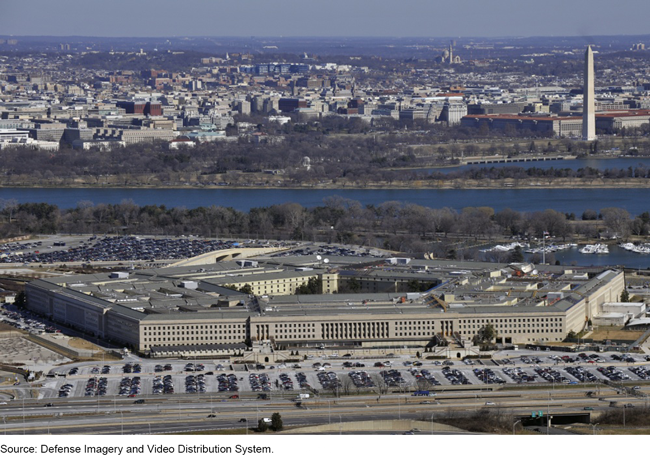Defense Budget: Opportunities Exist to Improve DOD's Management of Defense Spending
Fast Facts
Defense spending amounted to $714 billion in FY 2020—and is expected to increase to $733 billion in FY 2021.
We testified about ways that DOD can better manage defense spending. For instance, DOD could more clearly determine resource needs related to overseas contingency operations. DOD could also strengthen its efforts to avoid payment errors—the agency made about $11.4 billion in payment errors in 2020. DOD should also continue working on its department-wide reforms.
DOD concurred with our previous recommendations. However, there is uncertainty about DOD's leadership structure, which may hamper its efforts to improve defense spending.

Highlights
What GAO Found
GAO's previous work has shown that a number of opportunities exist for the Department of Defense (DOD) to strengthen management of defense spending, which would help the department address the challenges it faces, especially in a constrained budget environment. These opportunities include:
Improving budgeting execution of funds. DOD does not fully obligate the funds appropriated to it and can improve both its budgeting for and its use of the resources that are provided to it. For example, GAO found that DOD has left billions of dollars in appropriated amounts unspent over the past 10 fiscal years. Better estimating annual budget requirements and obligating appropriations provided by Congress within the period of availability established by Congress would help DOD minimize these cases of under-execution.
More clearly determining future resource requirements related to overseas contingency operations. DOD and Congress need a clearer determination of DOD's future resource requirements, in particular how and whether to incorporate enduring Overseas Contingency Operations (OCO) costs—costs that will endure beyond ongoing contingency operations—into DOD's base budget. These costs could total tens of billions of dollars a year. However, few details exist as to what makes up these enduring costs or how they were derived, raising questions about how much should be included as future requirements.
Reducing improper payments. Addressing improper payments—payments that should not have been made or were made in an incorrect amount—is an area where better financial management could save DOD billions of dollars. In its fiscal year 2020 agency financial report, DOD estimated that it paid about $11.4 billion in improper payments, or about 1.7 percent of all payments it made that year. DOD has taken steps to reduce improper payments in some areas, but DOD's estimates of its improper payments in other areas indicate more remains to be done.
Sustaining and refining department-wide business reform efforts. DOD must transform its overall business operations so that it can more efficiently and effectively use its resources. In recent years, DOD reported notable achievements from its most recent department-wide business reform efforts, including $37 billion in savings from fiscal years 2017 to 2021 as a result of these efforts. However, GAO previously found that while DOD's reported savings were largely reflected in its budget materials, the analyses underlying these estimates were not always well documented and the savings were not always the result of business reform.
Moreover, uncertainty about the leadership structure at DOD for overseeing and reforming business operations, including the recent elimination of the Chief Management Officer position, calls into question whether efforts to fundamentally transform how the department does business can be realized and sustained. GAO has previously highlighted the importance of DOD providing clear department-wide guidance on roles, responsibilities, authorities, and resources for business reform efforts will be necessary for DOD to make progress in these efforts.
Why GAO Did This Study
Decisions by DOD and Congress regarding long-term defense needs will have a meaningful impact on the nation's fiscal future. As the single largest category of discretionary spending, defense spending is likely to play a large role in any discussion of future federal spending. GAO and others have found that DOD faces challenges that are likely to put pressure on its budget moving forward. DOD is the only major federal agency that has been unable to receive a clean audit opinion on its financial statements.
This testimony provides information on how DOD can better manage defense spending, specifically related to its ability to (1) accurately estimate its budgetary requirements and execute its appropriated funds, (2) determine resource requirements related to overseas contingency operations, (3) reduce improper payments, and (4) sustain and refine department-wide reform efforts. For this testimony, GAO reviewed and summarized its recent work on DOD budget and financial management issues and departmental reform efforts.
Recommendations
In prior work on which this testimony is based, GAO made recommendations that DOD take steps to better estimate its annual budget requirements and future fiscal needs for OCO, reduce improper payments, and refine and formalize its departmental reform efforts. DOD generally concurred with these recommendations and is working toward implementing them.
